Affiliate disclosure: This post may contain affiliate links. Please see our Privacy Policy.
Wild Strawberries (Fragaria sp.) are a common sight in midsummer, and you can harvest them anywhere from lawns to woodlands. They have few look likes, so identifying wild strawberries is simple, even for children.
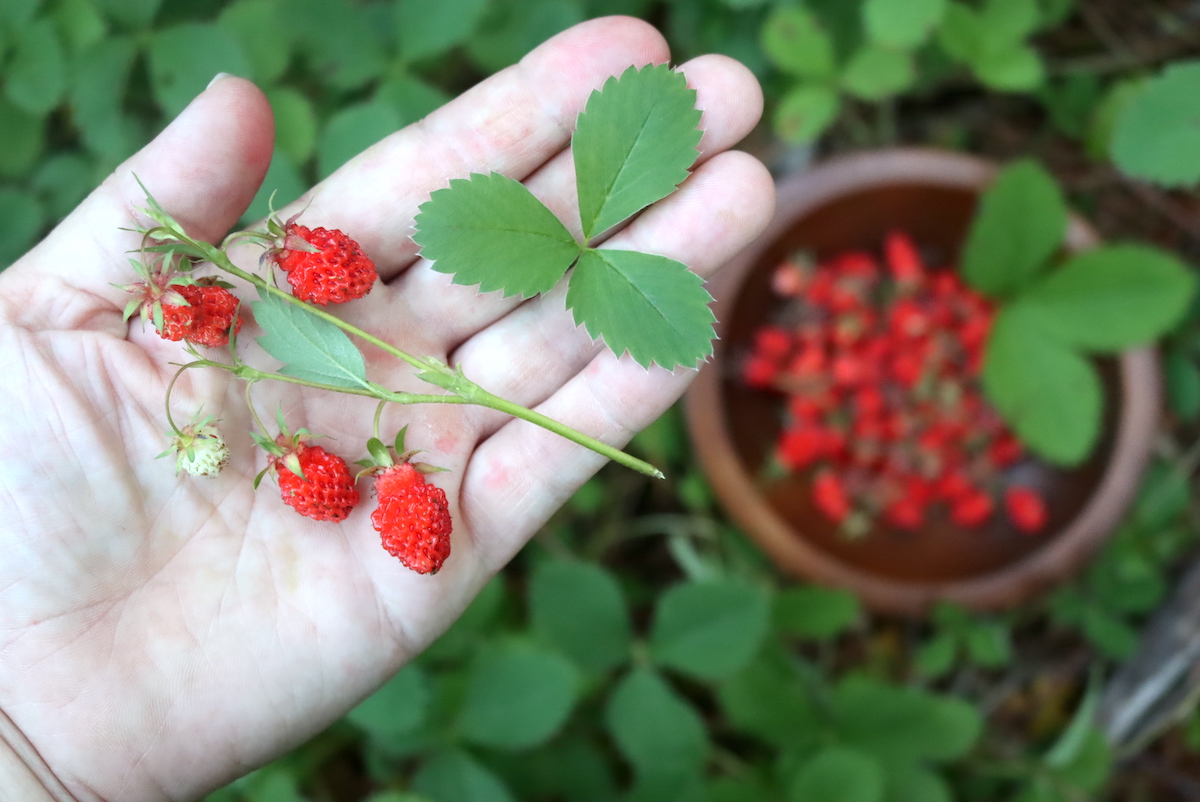
Wild strawberries are one of the simple pleasures of summer, and they grow just about anywhere their seeds are dropped. They don’t mind part shade, and they’ll gladly fruit in sandy soil that doesn’t support lawn grass.
They’re not picky about their environment, and they’ll grow with abandon given space.
The bright red berries are especially attractive to little ones, and my toddlers would spend hours scouring the lawn looking for these little jewels. It helps that they’re down low at a baby’s height and perfectly sized for little fingers.
My littles tend to pop them into their mouths as fast as they can find them, so it’s hard to know how many are harvested on a sunny summer afternoon. When I pick alongside them, I can usually accumulate a good-sized handful in about 5 minutes from a productive patch.
No wonder those little ones are hard at work peering into the grass!
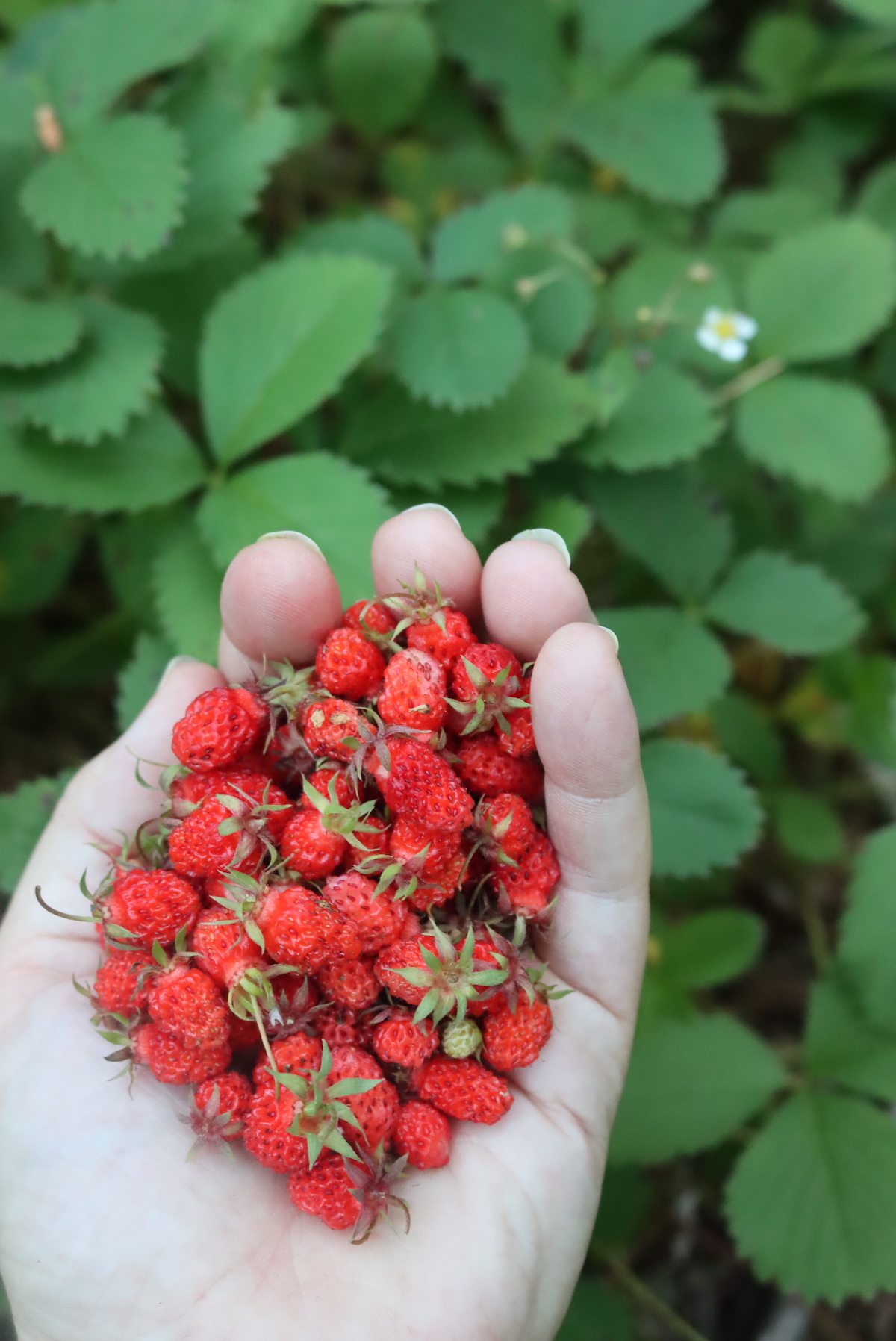
While most wild strawberries are quite small and intensely flavored, they do vary quite a bit based on the plant. Some are large and juicy, like cultivated strawberries, and occasionally you’ll find a plant that produces flavorless fruit.
Generally, wild strawberries are more flavorful than cultivated strawberries, packing all the flavor of those big grocery store berries into a smaller package for a more intense bite.
If you look long enough, you’ll find some big juicy berries, and they’ll have all the intense flavor of a wild strawberry, along with the big juicy texture of a cultivated one…and those are downright perfect.
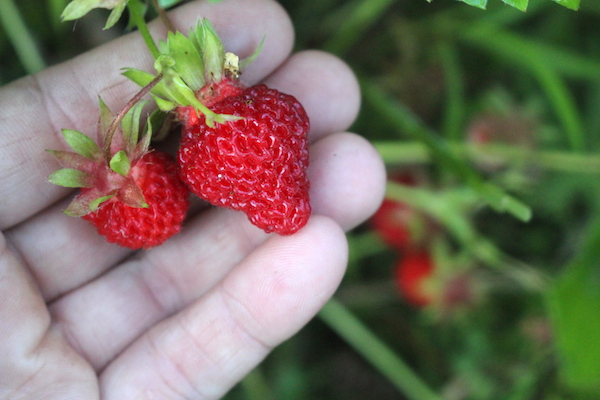
What are Wild Strawberries?
Wild Strawberries (Fragaria sp.) are low-growing, herbaceous, perennial plants that are members of the Rosacea or Rose family. There are over twenty species of Wild Strawberries. Depending on the species and region, you may hear them called Alpine Strawberries, Woodland Strawberries, Wood Strawberries, Mountain Strawberries, or Common Strawberries.
Interestingly, strawberries are not true berries. What we call a berry is actually a receptacle, and what we call the seeds are achenes. In addition to reproducing sexually by seed, they reproduce asexually, sending out stolons or runners that root and form new plants.
Humans have eaten wild strawberries for much longer than cultivated varieties have existed. Archeologists have found evidence of humans consuming strawberries dating back thousands of years. The first recorded evidence of strawberries in the archeological record dates back to the Mesolithic era (Middle Stone Age) between 10,000 to 5,000 BCE.
Different species of wild strawberries naturally occur throughout much of the world, including Europe, South America, North America, and Asia. Wild Strawberries are mentioned in Roman history as being used for medicinal purposes and have a long history of use in Chinese medicine.
Native Americans were eating strawberries before colonists arrived in the New World. Colonists recorded that some groups would mash and mix the berries with cornmeal and bake it into strawberry bread. This strawberry bread may have inspired the modern strawberry shortcake.
While wild strawberries were cultivated in some European gardens as early as the 1300s, it was not until the 1700s that the Chilean Strawberry (Fragaria chiloensis) and the Virginia Strawberry (Fragaria virginiana) were brought to France and crossed to create the ancestors of our modern Garden Strawberry (Fragaria × ananassa). From this cross, the English and Americans developed our modern garden varieties.
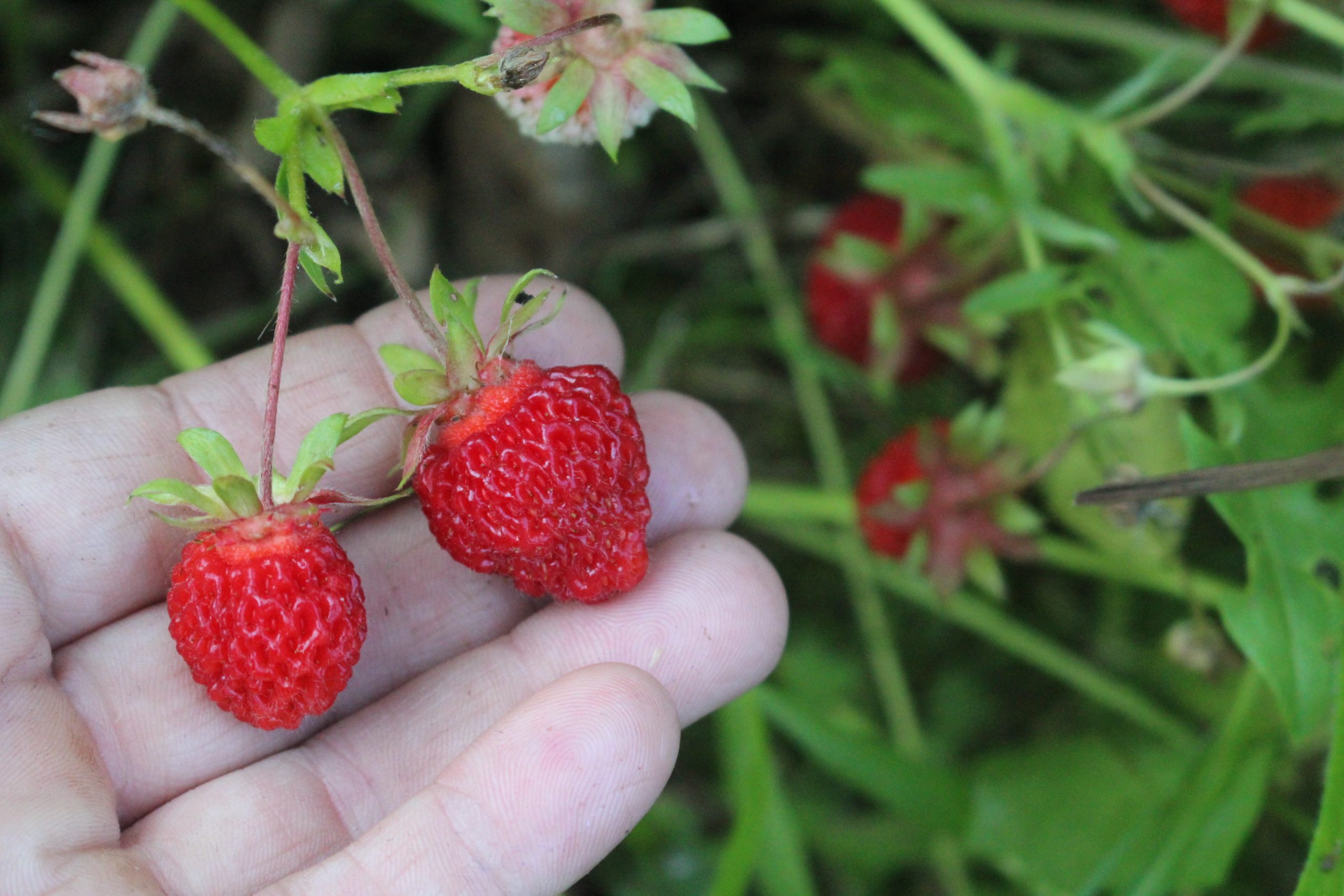
Are Wild Strawberries Safe to Eat?
Yes, the Wild Strawberry is edible in its entirety; you can safely consume the roots, flowers, leaves, and fruit. Historically, humans have harvested and used wild strawberries for food and medicine.
Some species of Wild Strawberry, like the Musk Strawberry, offer berries with intense aroma and flavor that gourmet food enthusiasts highly value. However, in other species, like the Wild Strawberry native to the Himalayas called Fragaria daltoniana, the berries have little to no flavor.
Every wild strawberry plant will taste a bit different, but generally, wild strawberries in the US and Europe are intensely flavorful, but less juicy than their cultivated counterparts.
The leaves and flowers may be used in salads and are often used in herbal teas. These teas are high in vitamin C and antioxidants. Herbalists have used the teas to boost immunity, alleviate diarrhea, help with kidney and liver issues, and treat digestive issues. Reportedly, Minutemen used tea from wild strawberry leaves to stave off scurvy during the American Revolution.
The roots have also been used in herbal medicine, often in tea. Some Native American groups would use tea from the roots as a spring tonic and blood purifier.
Types of Wild Strawberries
There are over 20 species of Wild Strawberries, many of which will hybridize. It can sometimes be tricky to tell them apart, but thankfully they are all edible. A few of the most common include:
- Woodland or European Strawberry (Fragaria vesca)- Common throughout the Northern Hemisphere, the Woodland Strawberry has strongly flavored, rounded berries, light green, trifoliate leaves, and hairy white flowers lifted above the leaves. Some of the earliest evidence of humans consuming strawberries is Fragaria vesca.
- Chilean or Beach Strawberry (Fragaria chiloensis)- The Chilean Strawberry is a tasty but tender strawberry native to warm temperate areas of North and South America. It has relatively thick, glossy green leaves and white flowers. The fruit is red on the outside and white on the inside. It was one of the two species crossed to create the Garden Strawberry.
- Virginia Strawberry (Fragaria virginiana)- The Virginia Strawberry is a tasty variety native to North America. It has sweet, small, round berries, white, five-petaled flowers, and trifoliate leaves that are green on top and pale beneath. It was the second species crossed to create the Garden Strawberry.
- Musk or Hautboy Strawberry (Fragaria moschata) – The Musk Strawberry is native to Europe and thrives along moist forest edges that protect it from temperature fluctuations. Its berries are renowned for their intense flavor, which is said to be a combination of pineapple and raspberry. They are cultivated commercially on a small scale in Italy.
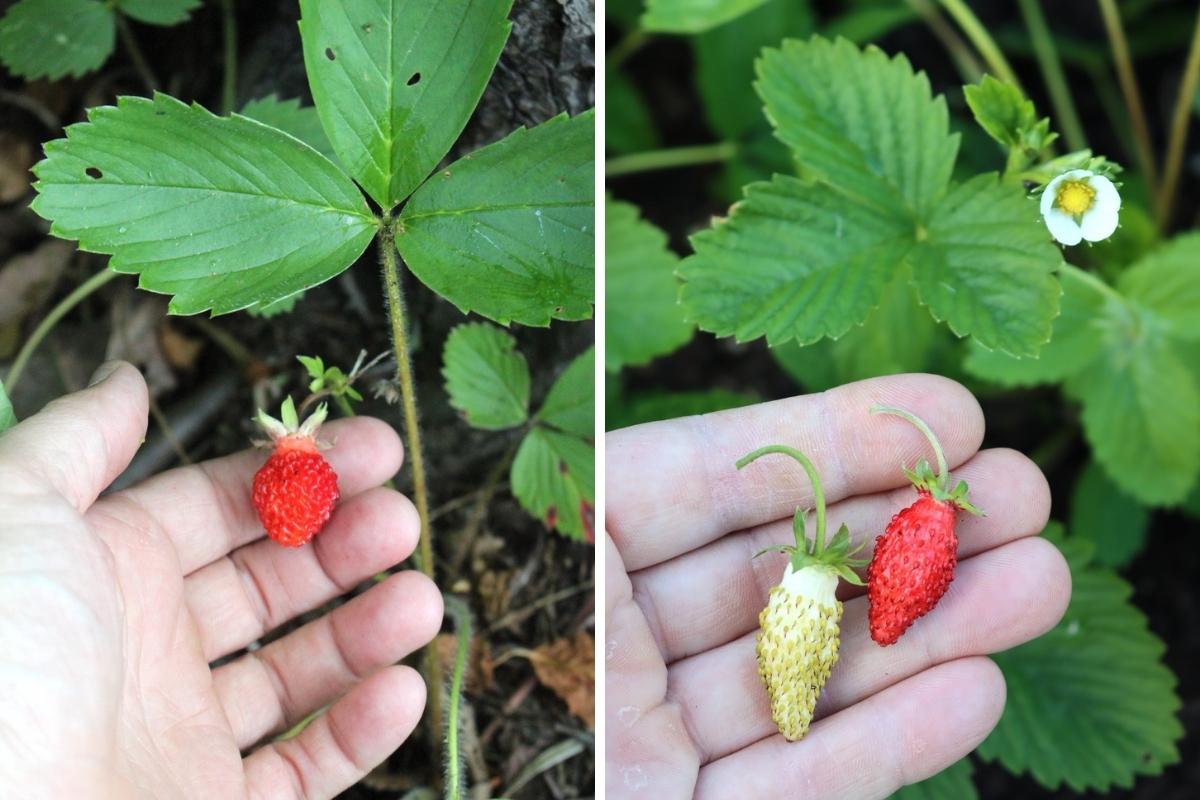
How are Wild Strawberries Different than Cultivated Strawberries?
Wild Strawberry plants are generally smaller than Garden Strawberry plants. They also tend to have a more upright growth habit than our sprawling Garden Strawberries.
Wild Strawberry leaves are typically smaller and more astringent than the leaves of Garden Strawberries. Some herbalists feel that the leaves of Wild Strawberries contain more medicinal compounds and are better suited for herbal teas than the leaves of Garden Strawberries.
The fruit of Wild Strawberries varies with species, but they typically differ from the Garden Strawberry in a few ways. While it isn’t always the case, Wild Strawberries tend to be smaller than Garden Strawberries.
Their small fruits also tend to be more dimpled, dense, and less juicy. Many species of Wild Strawberries also have fruit that is much more flavorful than that of Garden Strawberries. Gourmet cooks have noted that the fruit of wild strawberries has more concentrated sugars and different flavors, including more floral, tropical, and vanilla notes.
Also, Wild Strawberries are delicate and have a very short shelf life. Unlike their cultivated cousin, the Garden Strawberry, Wild Strawberries haven’t been bred to hold up to transportation or to keep well in your fridge. It’s best to eat or preserve them soon after harvesting.

Where to Find Wild Strawberries
Species of Wild Strawberries can be found worldwide, including in Europe, Asia, North America, South America, and parts of Australia and Africa.
In the United States and Canada, Wild Strawberries, especially the Virginia Strawberry (Fragaria virginiana), are relatively common and widespread. The Woodland Strawberry has also naturalized in parts of the US and Canada, and the Chilean or Beach Strawberry can be found on the West Coast.
Wild Strawberries occur in a wide range of habitats. In the US, the Virginia Strawberry (Fragaria virginiana) is typically found in fields, prairies, forest openings, forest edges, or the banks of rivers and lakes where it will receive full sun to partial shade. It thrives in rich soil but will tolerate degraded habitats.
As the name suggests, the Woodland Strawberry (Fragaria vesca) generally tolerates a bit more shade and more moisture. You can find it in mixed forests, hardwood forests, forest clearings and edges, cedar swamps, and damp ledges.
The Chilean or Beach Strawberry (Fragaria chiloensis) grows on sandy beaches above the tidal zone in warm temperate habitats like the Pacific coast and Hawaii.
When do Wild Strawberries Ripen?
The date that Wild Strawberries ripen varies throughout their range and with species. In the United States, you’re most likely to find Wild Strawberries between April and October. However, in northern areas, they may not ripen until May and may stop fruiting in September.
If you find a patch of Wild Strawberries, watch for them to blossom. The fruit should begin to ripen about one month after they flower. They will continue to bear through the summer until fall frost.
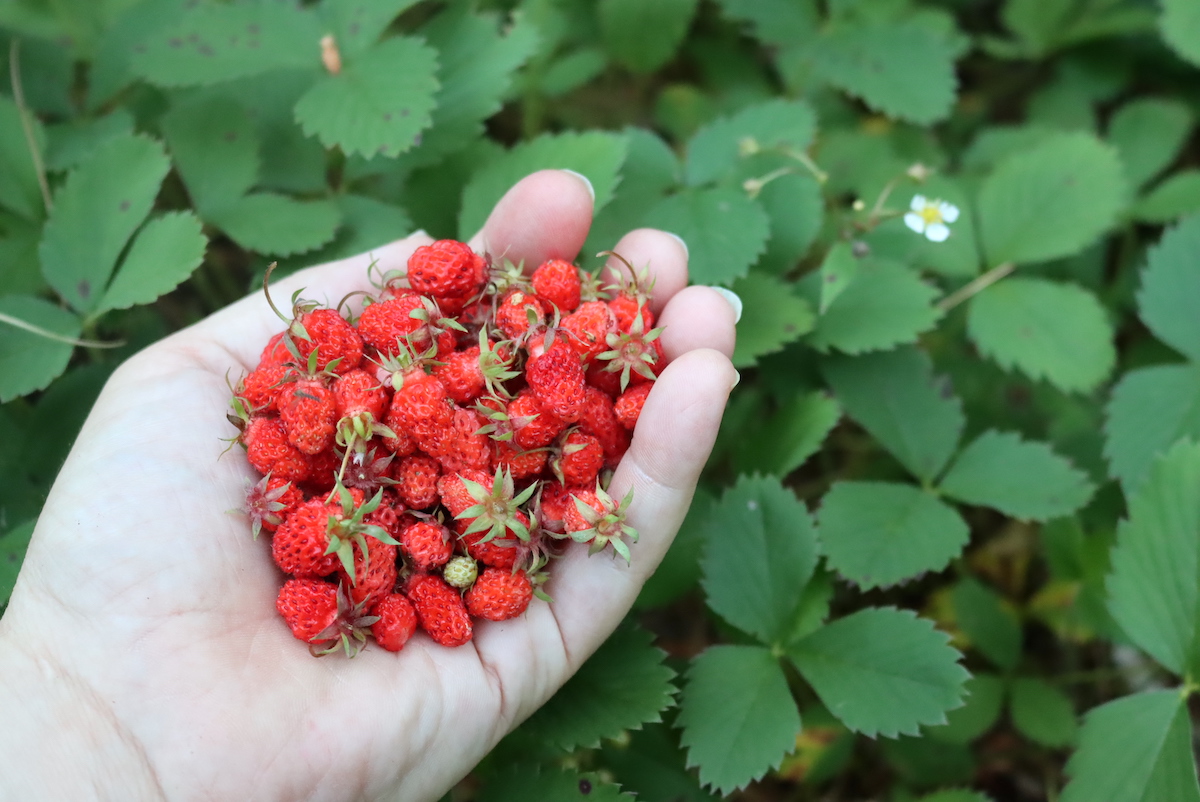
Identifying Wild Strawberries
Wild Strawberries are small herbaceous perennial plants that can be hard to pick out from a distance. If you’ve grown or picked Garden Strawberries, you have a pretty good idea of what the plants look like. They’re fairly low-growing, reaching heights of up to seven inches, have toothed, green, trifoliate leaves, white blossoms, and send out runners to reproduce.
Wild Strawberry plants are sometimes confused with Mock Strawberries (Potentilla indica) an exotic invasive that’s native to Asia. Though it is similar in overall appearance, the blossoms are yellow, not white. The fruit of the Mock Strawberry is edible but not desirable; it’s bland and dry.
What do Wild Strawberries Look Like?
Wild Strawberry berries look very similar to those of Garden Strawberries. They’re typically red and covered with seeds or achenes on the outside. Some species may have berries that are more pinkish than red or are even darker red or maroon. They may be rounded or more oblong depending on the species.
Occasionally, you may find strawberries that are still white even though they are ripe. In the wild, this phenomenon is known to occur as a mutation of the Woodland Strawberry (Fragaria vesca). These white berries were first discovered about 300 years ago in the low Alps. They were a quick favorite of gardeners due to their incredible flavor, which is often described as strawberry mixed with pineapple or guava.
White berries may also occur as a cross between the Chilean Strawberry (Fragaria chiloensis) and The Virginia Strawberry (Fragaria virginiana). These are generally known as Pine Berries.
If you’re interested in growing these white berries, they may have some advantages for home gardeners. The lack of coloration in the berries seems to discourage birds and insects, helping you get a bigger harvest. Some folks who are allergic to red strawberries also report no issues with white strawberries.

How big do wild strawberries get?
Size isn’t a good indicator when determining whether you’re looking at a Wild or Garden Strawberry. Often, Wild Strawberries are smaller than Garden Strawberries, but not always! Wild Strawberries are generally only about 1/4 to 1/2 inch wide, but the berries may become quite large when grown in ideal conditions.
There is also some variation between species and individual plants.
Selecting for these variations is what led to modern cultivated strawberries, so if you look carefully, you can often find wild strawberries with very large juicy fruits.
The fruits may also vary widely in flavor. They may be very sweet with a classic strawberry taste or bland and mild. Some species also have more tropical or raspberry-like flavors.
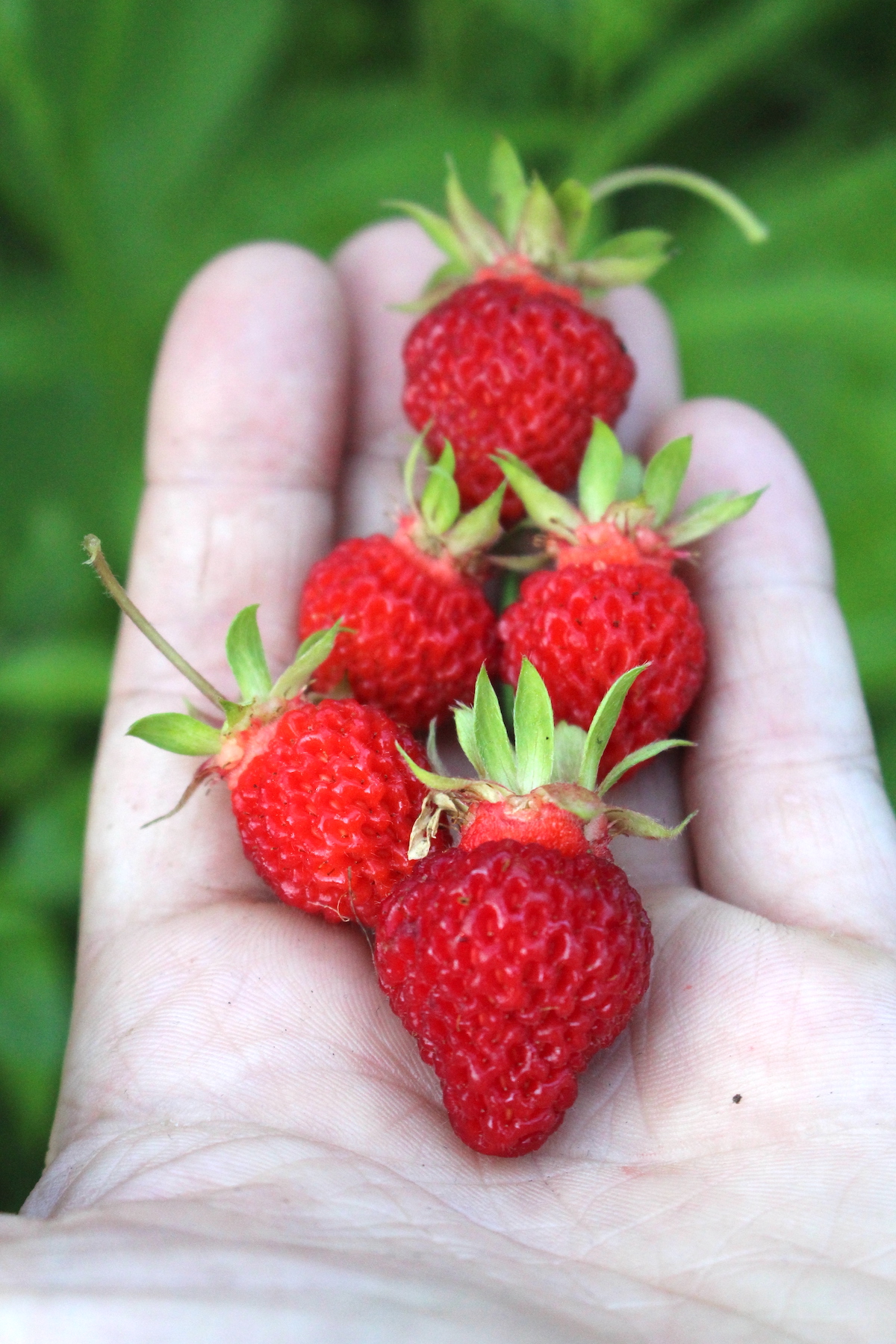
Wild Strawberry Leaves
Like Garden Strawberries, Wild Strawberries have trifoliate leaves. This means that each leaf is comprised of three leaflets with small stems. The leaflets are typically oblong and have toothed or serrated edges. Their size varies, but the leaflets of Virginia Strawberries are often 2 1/2 to 3 inches long and about 1 1/2 inches wide.
The color of the leaves may vary with species and location. They may be light green, dark green, or display reddish tinges. They may also be dull or glossy. The undersides are generally paler than the tops and may have some silky hairs.
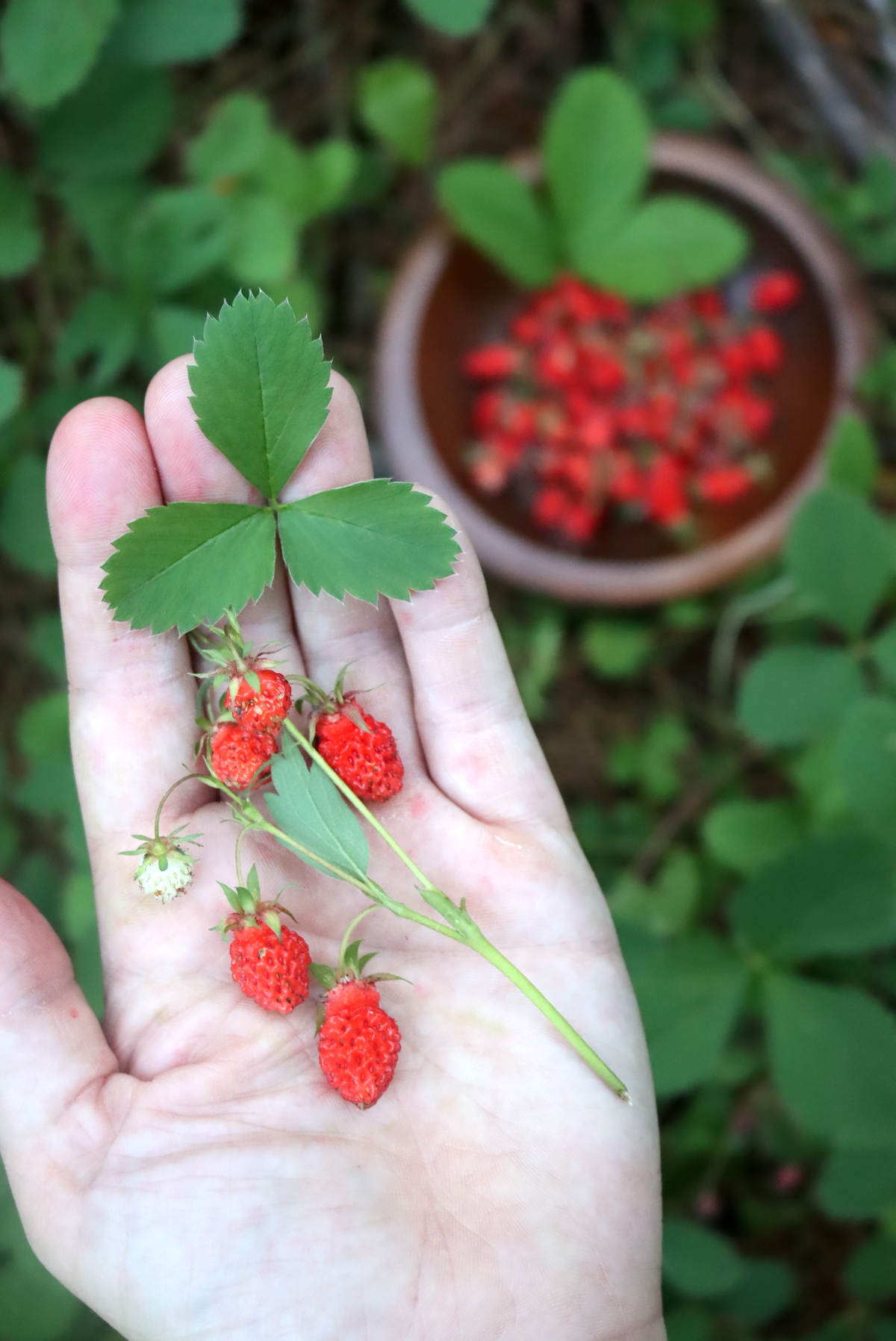
Wild Strawberry Flowers
Wild Strawberries have white five-petaled flowers with numerous yellow-antlered stamens in the center.
They’re generally about 3/4 inches in diameter and have ten small green sepals under the petals.
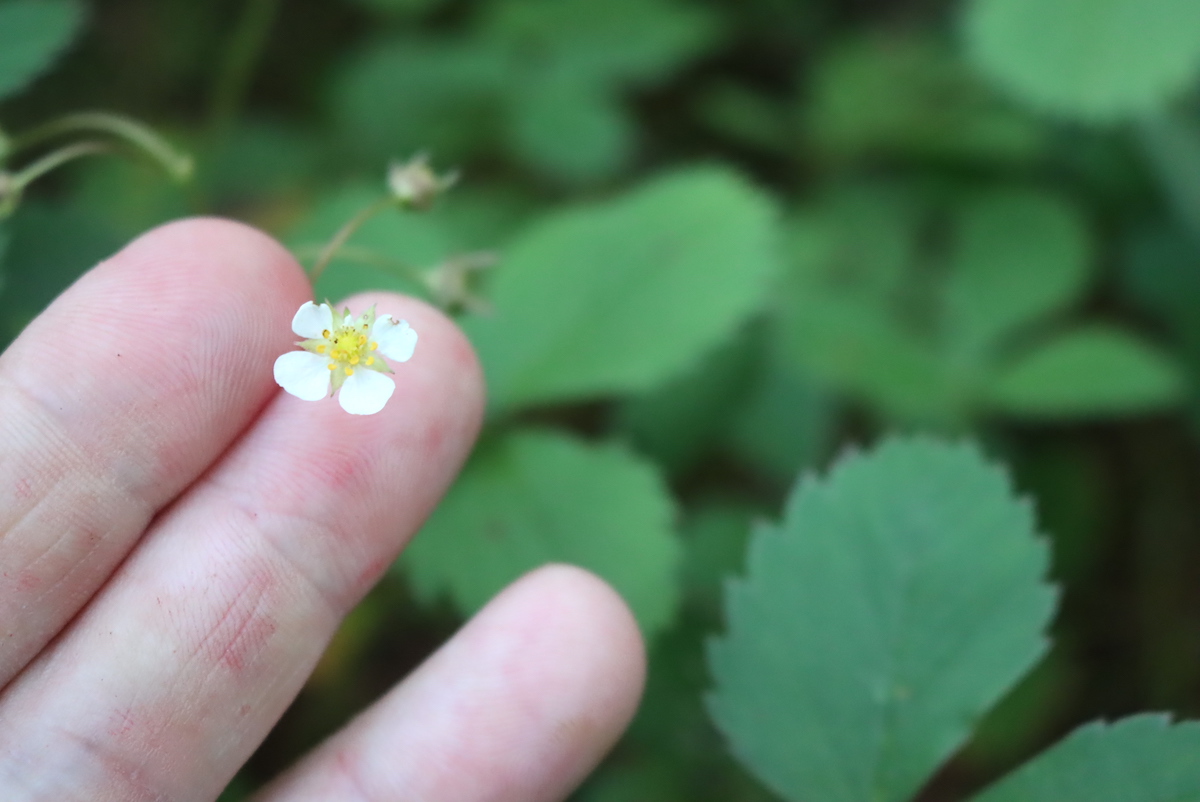
Can You Grow Wild Strawberries?
Yes, growing Wild Strawberries is similar to growing Garden Strawberries. Many species of Wild Strawberries were cultivated in backyard gardens before the breeding of Garden Strawberries. Some, like the Musk Strawberry (Fragaria moschata) are still commonly cultivated in some regions.
These days, you can find Wild Strawberry plants available for order online. However, if you have Wild Strawberries growing nearby, you can propagate them to get free plants for your garden.
If you have a wild patch, you can grow wild strawberries from seed, or transplant strawberries from runners.

Ways to use Wild Strawberries
Wild Strawberries are excellent eaten fresh, and you’ll probably find yourself eating most of them while standing in the patch. However, if you’re a dedicated forager or find a particularly abundant patch, there are several tasty ways to use strawberries.
Fresh berries make excellent toppings for yogurt, ice cream, cereal, and salads. The leaves can also be added to salads or used as a potherb. If you have enough berries to preserve, you can add them to jams, freeze them, or dry them for use in granola or muesli mixes. Additionally, you can bake them into crisps or pies with other seasonally available fruit.
You can also use Wild Strawberries medicinally. The leaves and roots can be used fresh or dried in teas and tinctures. The leaves contain high levels of vitamin C and were historically used to treat various conditions. The roots are thought to be a good tonic.
You can also use the berries medicinally. Their juice was historically used for sunburn, sores, and other skin irritations. Some Native American groups also used the juice to cleanse their teeth by swishing it around in their mouth.
Wild Strawberry Recipes
- One of the classic ways to preserve Wild Strawberries for long-term use is to can Wild Strawberry Jam.
- Try this Wild Strawberry and thyme ice cream recipe from the BBC for a cool summertime treat.
- Dive into history with this Wild Strawberry Tea Cake recipe from Catharine Parr Traill’s 1854 book, “The Female Emigrant’s Guide.”
- For medicinal value or just a refreshing beverage, check out Mother Earth Living’s Strawberry Tea, made with leaves and berries. It can be served hot or cold, and mint is an excellent addition!
- Impress your guests with these adorable Wild Strawberry Tartlets from Kitchen Stories.
- Create a custardy, creamy Wild Strawberry Pie with this recipe from Nigella.
- Make a fun Wild Strawberry drink just for the adults with this Wild Strawberry Fizz from Flavorite. You can also omit the rum for a non-alcoholic version.
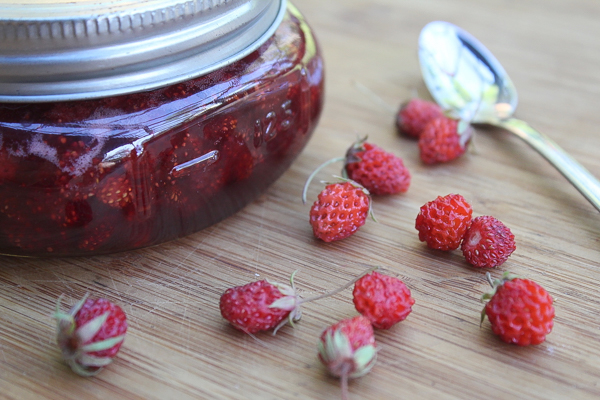
Fruit Foraging Guides
Looking for more tasty edible wild fruit?
- Foraging Bunchberries
- Foraging Saskatoons (Serviceberries)
- Foraging Wild Black Cherries
- Foraging Chokecherries
- Foraging Aronia (Black Chokeberry)
- Foraging Partridgeberry (Mitchella repens)
- Foraging Barberry
Foraging Guides
Looking for more edible wild plants to forage?
- Foraging Wild Black Cherry (Prunus serotina)
- Foraging Black Walnuts (Juglans nigra)
- Foraging Fireweed (Rosebay Willowherb)
- Foraging Marsh Marigold (Caltha palustris)
- Foraging Fiddlehead Ferns
- Foraging Ramps (Wild Leeks)
- Foraging Wild Asparagus
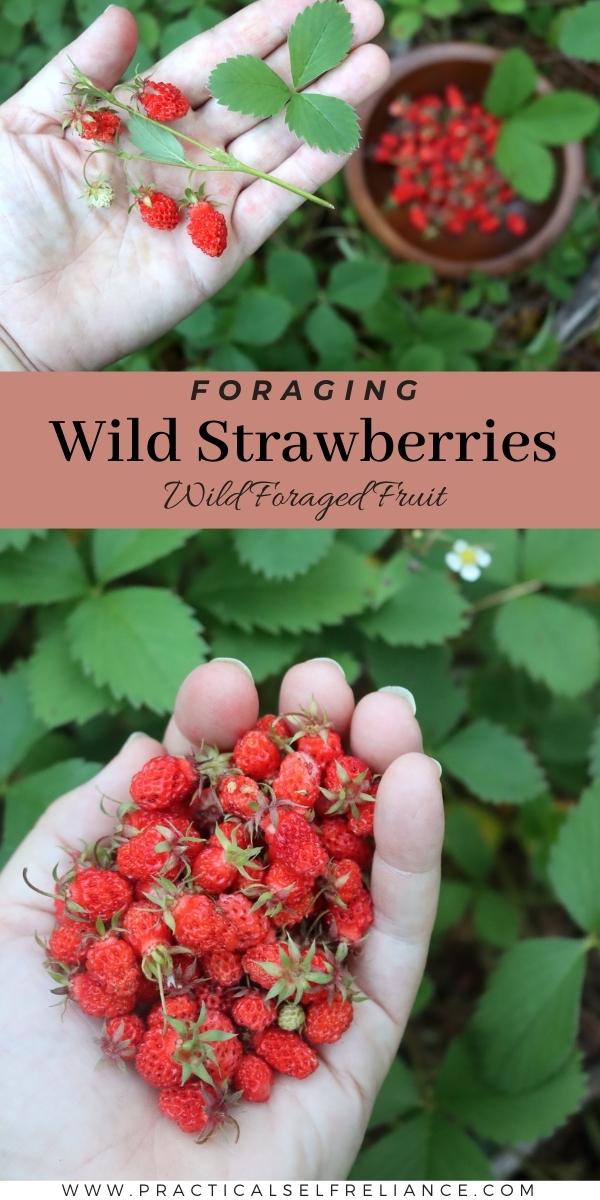



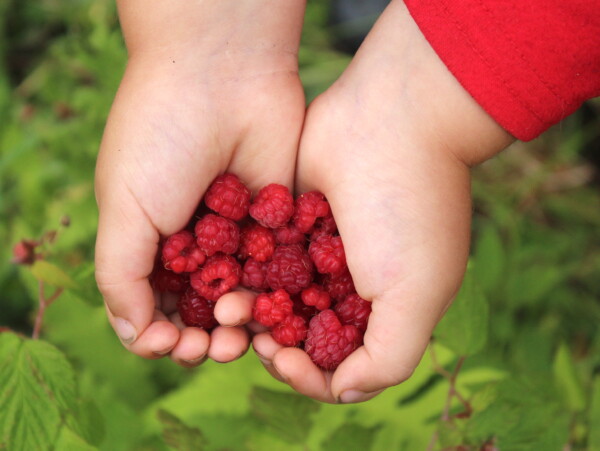
Almost every year I go to the country side and forage wild strawberries, as a matter of fact they are flowering as we speak. Where I live they are smaller than those in your photos but they taste amazing, very sweet and flavorful.